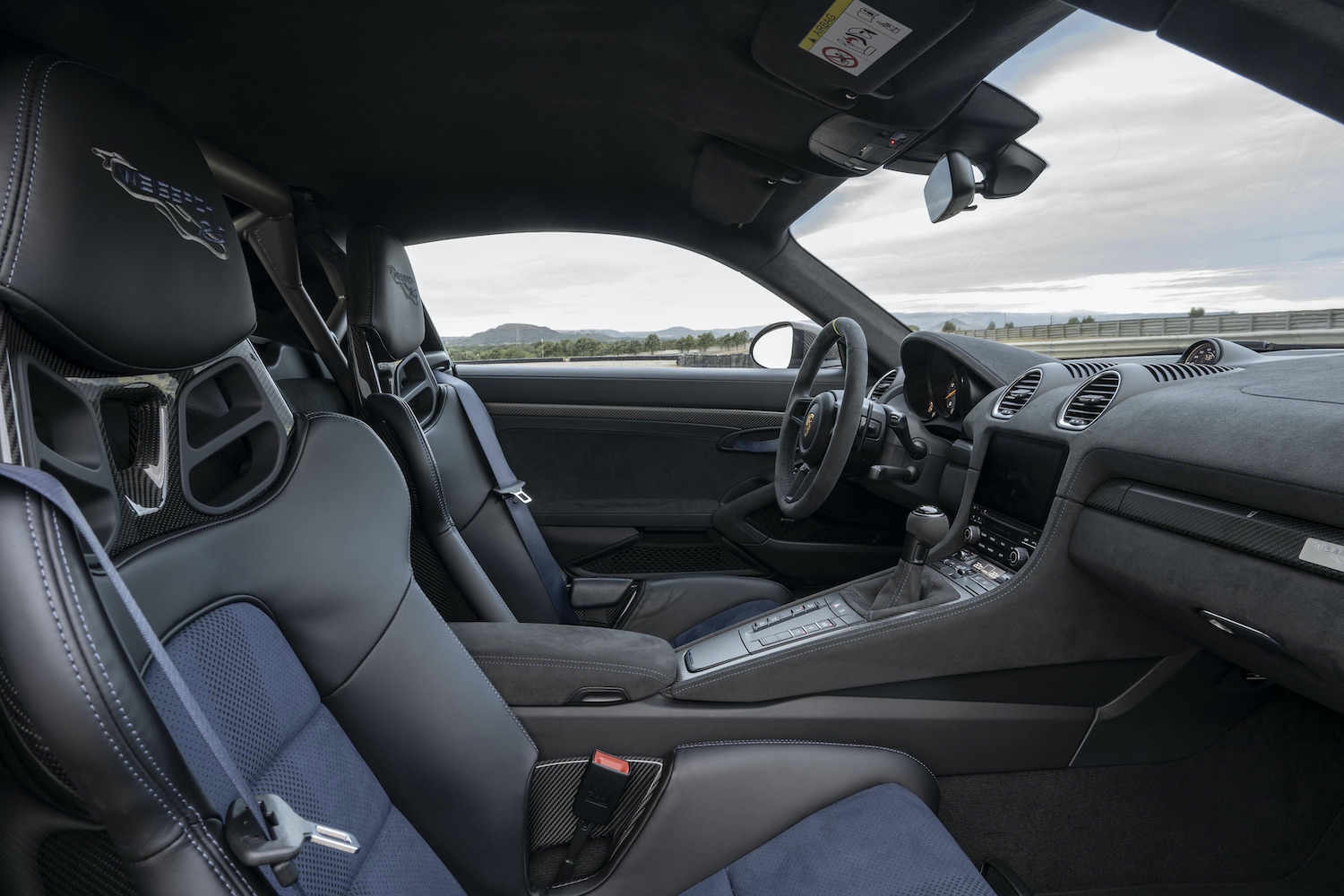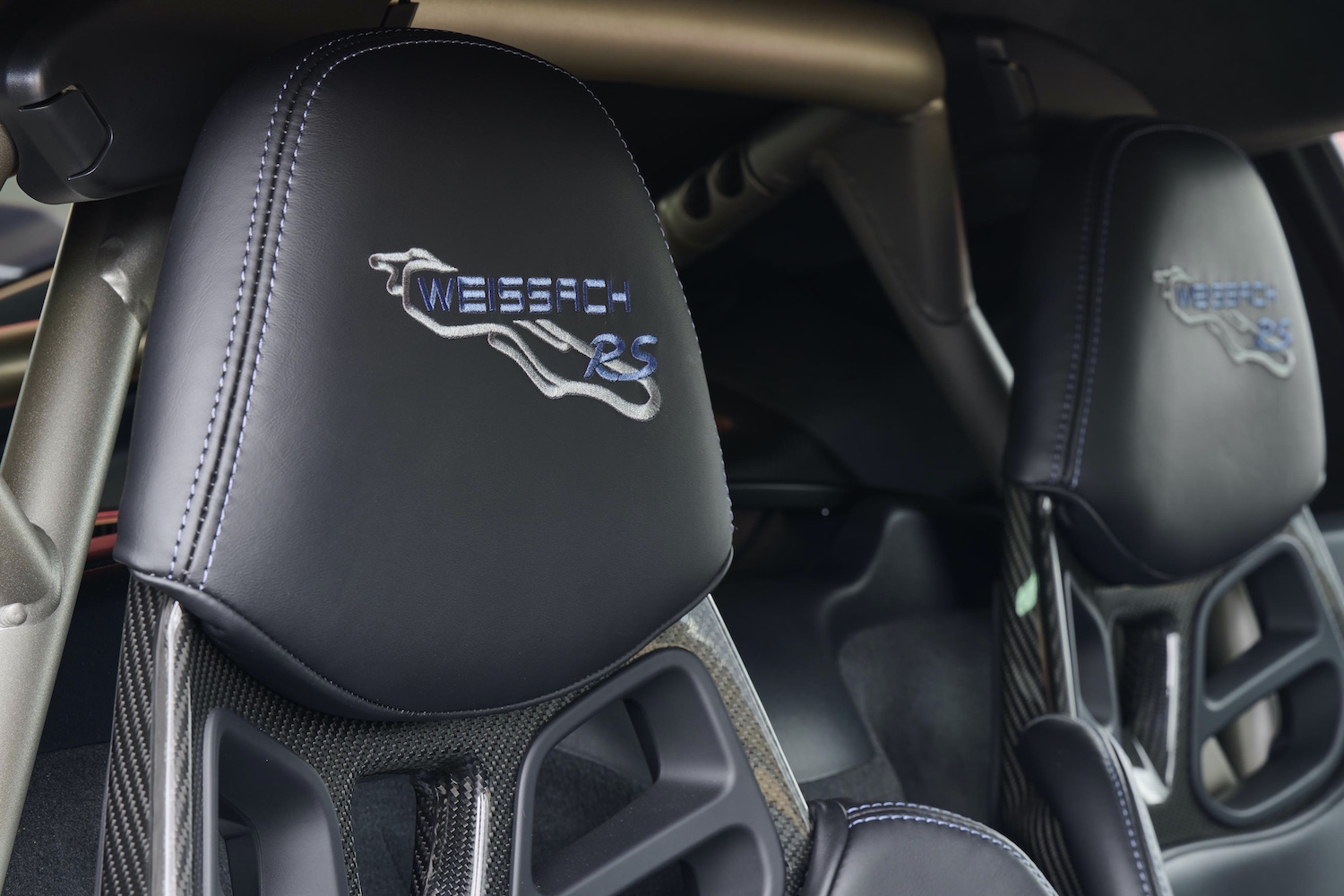
For roughly 16 years, Porsche decided it was best to keep the mid-engine Cayman and rear-engine 911 as far apart as possible. That’s why the Cayman was never available in a track-oriented RS trim. It’s also why Porsche found ways to neuter the Cayman even when it used parts from the 911. With the death of the internal combustion engine on the horizon, Porsche has decided to change that. On the eve of the Los Angeles Auto Show, Porsche unveiled the 2022 718 Cayman GT4 RS. It’s a 493-horsepower, hardcore Cayman meant for track rats.
Related Guides
While one would assume that Porsche would’ve used the 4.0-liter flat-six engine in the Cayman GT4, the GT4 RS actually uses the current 911 GT3’s 4.0-liter flat-six. That means the GT4 RS makes a stout 493 horsepower and 331 pound-feet of torque, which are increases of 79 hp and 14 lb-ft of torque from the regular GT4. While the GT4 RS uses the same engine as the 911 GT3, it makes less power. The reason for that is due to the GT4 RS’ longer exhaust pipes.
Porsche was finally able to fit the Cayman with the same engine as the 911 GT3 because the automaker designed the dry-sump oiling system in both engines to make them compatible.
As in other Porsche RS cars, the GT4 RS will be an automatic transmission-only affair. Before you write your hate mail to Porsche, the automaker claims that it didn’t have a manual transmission that would work with the Cayman’s mid-engine layout and that kind of power. Plus, this being a track-focused vehicle and all, if you want the quickest lap times, automatic transmissions are quicker than manuals.
So, the track car is only available with a 7-speed PDK dual-clutch automatic transmission. The ratios of the gearbox have been shortened, resulting in improved acceleration. That could explain why Porsche is claiming a zero-to-60-mph time of 3.2 seconds — roughly half a second quicker than the regular GT4. Flat out, the GT4 RS will hit 196 mph, 9 mph faster than the GT4.

As one would expect, Porsche didn’t just stuff a massive engine into the GT4 RS and call it a day. The automaker also reworked the suspension, adding better Bilstein dampers, stiffer springs, and spherical ball joints instead of rubber bushings. Owners that take the GT4 RS to the track will appreciate the greater range of camber and toe adjustment, allowing them to tailor the vehicle to their preference. Porsche will offer the GT4 RS with ultra-sticky Michelin Pilot Sport Cup 2 R tires, which it used to set a 7:04.5 time around the Nurburging.
There’s also the GT4 RS’ all-out body kit that brings 25% more downforce than the GT4. With a rear window that’s made from lightweight glass, reduced sound-deadening, lighter carpet, fenders that utilize fiberglass reinforced plastic, and other weight-saving measures, Porsche was able to reduce the GT4 RS’ weight by 50 pounds compared to the GT4. The available Weissach Pack brings things like exposed carbon fiber pieces, titanium exhaust tips, and forged wheels for maximum weight reduction.
Porsche’s RS cars have never been cheap and all of these extras push the GT4 RS to be the most expensive Cayman in the lineup, carrying a starting price tag of $143,050 with destination. There is some good news, though, as Porsche will sell the GT4 RS until the 718 Cayman goes out of production. Our advice? Start saving for the model now. Porsche fans have been waiting a long time for an RS-badged Cayman, but it looks like the wait was worth it for consumers that have the funds to afford the purchase.















